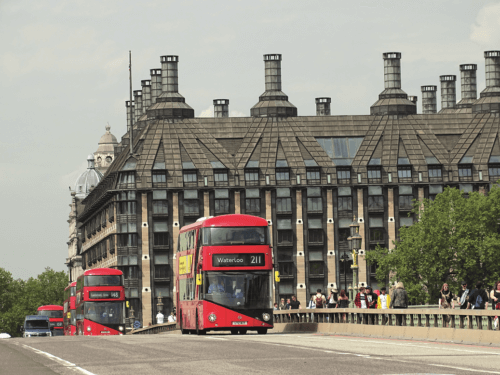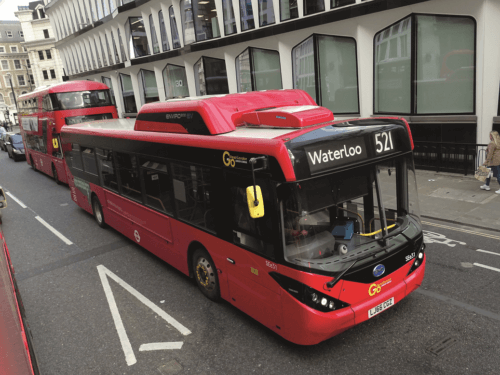
TfL issues proposals it says are aimed to mitigate the effect on passengers as much as possible while fulfilling Government requirement for savings
Proposals on reshaping the central and inner London bus network, following a Government requirement for significant savings, have been outlined by Transport for London (TfL). The proposals have been set out by TfL as a result of the Government requiring it to reduce service levels on London’s bus network.
Before the coronavirus pandemic, TfL said it had made huge strides to improve its financial resilience. Due to its reliance on passenger fares for the majority of its income, the operator said the effect of the pandemic on its finances has been devastating, requiring Government support to keep public transport in London operating. It says passenger numbers continue to recover, but they are still significantly below pre-pandemic levels. The Government set a number of conditions before providing emergency funding to enable TfL to keep operating, including requiring a plan setting out how to achieve significant financial savings and reduce service levels. This plan included reducing the extent of the bus network by 4% by 2024/25.
Proposals to achieve this reduction, by changing and withdrawing some bus routes in and around central London, were put to consultation on 1 June. This six-week consultation sets out how TfL will ensure the bus network continues to provide Londoners with the service they need while responding to Government requirements to make further savings.
TfL says that it has worked to ensure that the bus mileage removed from the network is in locations that already have a higher provision of buses. The bus routes proposed for changes or withdrawal are already well served by other routes, it says, meaning services would still more than meet demand and allow passengers to still make the same journeys, though with an additional interchange in some instances. The operator believes that taking this approach reduces the effect on passengers as much as possible and will allow for investment in outer London where it says there is a clear need for more buses due to higher demand, whilst ensuring a continued reliable network of routes in central and inner London.
Passengers can also make use of new ‘hopper’ fares, meaning no extra costs will be incurred for changing buses within an hour. While buses remain the most popular form of transport in London, demand on many central and inner London bus routes has reduced. TfL reports that ridership on some routes has been declining since 2014, and that by 2019 passenger levels had fallen by 9% as improvements to rail services and to walking and cycling infrastructure provided new alternatives, especially in central and inner London.
TfL’s current short-term funding deal expires on the 24 June. If a sustainable new agreement cannot be achieved, TfL says it could be required to reduce bus services by nearly 20% – an outcome that it says it is working hard to avoid. TfL says that a 20% reduction of the bus network ‘would see Londoners disconnected from communities and places of work, with damaging impacts to the economy.
Deputy Mayor for Transport, Seb Dance, said: “No one wants to see reductions to our bus network, but TfL is having to consider these changes because of the savings demanded by the Government as part of the emergency funding deals during the pandemic. “TfL has looked carefully at the routes affected in order to reduce the impact on passengers as much as possible. Routes changed are ones where there are very similar existing services or where passengers would make use of the Mayor’s ‘hopper’ fare to reach their destination. If TfL is to avoid further cuts which would damage our city’s economic recovery from this pandemic, the Government must do the right thing and come forward with a long term funding deal to support the capital’s public transport – as governments of almost all other major global cities do.”

Geoff Hobbs, Director of Public Transport Service Planning at TfL, said: “Significant changes in how people use transport in central and inner London mean that – as we work to meet the requirements of our funding agreement with Government – the proposals we are consulting on have been designed to minimise the impact on customers and ensure that the majority still have a direct bus for their journey.
“Adapting the capital’s bus service – such a significant part of our transport network – is what we have always done to ensure it keeps up with changing needs of Londoners. The flexible nature of the bus network means we can respond to changes in demand, both now and in the future.
“We know that these plans will have some impact on some of our customers, but we are trying very hard to ensure that we can still have the right level of service where it is needed and can deliver our long-term positive vision for the bus network.”
TfL is inviting feedback on plans to withdraw some individual bus routes or sections of routes where they are duplicated by other high-frequency services, or are very close to alternative stops. These changes would ensure buses can operate where they are most needed. To give customers a more holistic view of how their journeys might be affected, the proposals are set out in ‘neighbourhoods.’ For example, as part of the Horseferry neighbourhood proposals, the 3 and the C10 would be re-routed and become core high frequency routes. Changes would be made to the 77 and 507 to improve access to Waterloo station and replace parts of routes 11 and 211.
Currently, 19% of journeys made on central London bus routes involve a change of bus. Under its proposals, TfL expects the proportion of customers who would need to change buses to increase to around 24%, although the hopper fare, which allows unlimited journeys within an hour for the price of a single fare, would ensure most customers don’t pay more. The plans include ensuring there are high frequency services
at interchanges to keep waiting times to a minimum and TfL Go, its journey planner and improved information on buses and at stops are expected to help customers plan the quickest route possible. To enhance safety where passengers have to change bus, TfL says it will improve the local environment with better lighting and street design. TfL said that making sure the bus network continues to remain efficient means it can deliver the savings required by Government and accommodate development in outer London, where the majority of Londoners live but public transport is not as comprehensive.
Services that face withdrawal if customers could use other services on the network are: 4, 11, 12, 14, 16, 24, 31, 45, 72, 74, 78, 242, 349, 521, C3, D7, N11, N16, N31, N72, N74 and N242.
Services that could change are: 3, 6, 15, 19, 23, 26, 27, 43, 47, 49, 53, 56, 59, 77, 88, 98, 100, 113, 133, 135, 148, 171, 189, 205, 211, 214, 236, 254, 272, 277, 279, 283, 328, 343, 259, 388, 414, 430, 476, 507, C10, D3, D8, N15, N19, N26, N27, N98, N133, N205 and N242.
New routes may be introduced by TfL to ensure full network coverage as a result of the changes, which would be the N32, N414, N430 and the N507
TfL says its proposals are designed to ensure it continues to provide a resilient and sustainable bus network. The savings generated will also contribute to TfL realising the long-term vision set out in its Bus Action Plan of an attractive, green bus service for all Londoners. They will also help to protect the investment needed to meet the Mayor’s targets for a zero carbon city by 2030. Catering to the shifting landscape in outer London will also help achieve the target of 80% of journeys being made by sustainable transport modes by 2041.
The consultation ends on 12 July and can be viewed at haveyoursay.tfl.gov.uk/busreview

